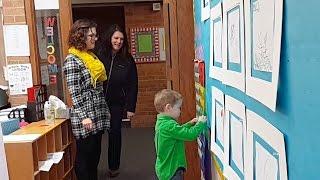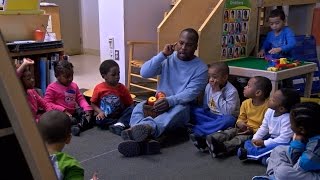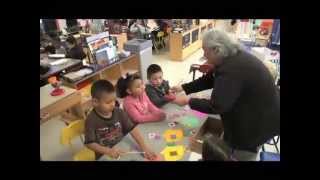How to Communicate Effectively with Parents
Discussing concerns about a child’s development or behavior can be difficult. This video will present tips for communicating with families.
Read Transcript
Hello, and Welcome to Included Together Instructional Video Series. I’m your host, Rebecca Tolan. In this video, kits program specialist, Neely Matthews, will offer some techniques for effective communication with parents by modeling a conversation at a youth center. Take note, of how the word she uses, as well as her body language, makes the parent feel comfortable in the environment. When you want to have an important conversation with the parent make sure you’re setting the meeting up for success. Let the parent know ahead of time that you want to speak to with them, and confirm that it won’t be an inconvenience. “Hello, Mrs. Johnson? This is Neely Matthews from the KITT Youth Center.” “Hi, I was just wondering if you had a few minutes to talk when you came to pick up Adam today?” “Yes, Adams’ fine, I just want to get your advice on a few things.” The cookie or sandwich is used when you address a parent about what’s going on in the program with their child. You start with something positive, get to the middle, cream or meat of the issue, and then end with a positive. “Hi Mrs. Johnson. Thanks for coming in today.” Mrs. Johnson: “Sure.” “Here you go, have a seat please.” Mrs. Johnson: “Okay.” “Mrs. Johnson, thank you for coming in, we’re really enjoying having Adam in our program, he’s very creative, he’s getting along with all the children. We did have an incident today during nap time, and I just wanted to discuss that with you. He kicked another child in the face while that child was laying down on his cot.” Mrs. Johnson: “I’m sure the child must have provoked him because, Adam wouldn’t have done something like that on his own.” “Well, we did identify that the child that was laying down on the cot did instigate the situation with Adam and we are addressing that child, however we also think that there is an issue going on with Adam.” Mrs. Johnson: “Oh, what do you think that is?” “I think we need to keep Adam engaged or some quiet activities. We recognize that not all children sleep at this age.” Mrs. Johnson: “Well, Adam hasn’t slept for quite a while at home and he is five.” “Yes, I understand that you know all children have different needs and we want Adam to be successful in our program we just want to see if you have any suggestions that might keep him quietly engaged while the other children are sleeping.” Mrs. Johnson: “We do have a workbook that he uses at home and sometimes that keeps him quiet up to an hour.” “Oh, that would be great. Do you think that you could send it with him tomorrow?” Mrs. Johnson: “Yeah, you know I could put it in his backpack.” “Perfect, I really appreciate your input. You know what, Adam is doing a great job, we really enjoy having him here. He’s made a lot of friends.” Mrs. Johnson: “Oh, that’s good to know. Also, you should know that Adam’s been anxious lately his dad has been going on training exercises overnight and he’s been having trouble sleeping and then he’s anxious the next day, so we’ve been trying to implement more of a routine at home and we’re hoping that that helps.” “Well I really appreciate you that and actually you know I a communication journal that we use here at the center and all it is, is it’s a way for us to communicate with you, and you back to the staff. So, you can write something down like if dad goes on a training exercise and Adam doesn’t get a whole lot of sleep or you know he wants to spend more time with dad in the morning just so that the staff know what’s going on with him if they need to give a little bit more space. Then it’s a great way for us to communicate. It stays in the backpack and it goes back and forth with Adam. Mrs. Johnson: “That’s a really great idea I like that, so I can just send you information about how he’s feeling in the day and so forth and then each of us will check the backpack everyday?” “Right, and if we have any questions or ideas we can also write them down here to you and you could respond to us.” Mrs. Johnson: “that’s great that really makes me feel like you guys are trying to help Adam as well.” Be sure to visit kits website for more information at kit online dot org.
Help teachers and children
worldwide by sharing how
you teach.
A global movement of people sharing knowledge and learning from each other, to better educate our children and create hope for the world.
A global movement of people sharing knowledge and learning from each other, to better educate our children and create hope for the world.






